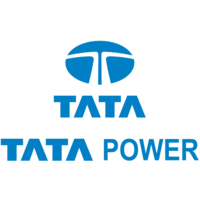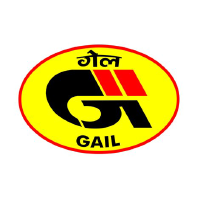Company Analysis PTC India Limited
1. Summary
Advantages
- Price (178.3 ₹) is less than fair price (203.14 ₹)
- Dividends (4.04%) are higher than the sector average (1.94%).
- The stock's return over the last year (-16.03%) is higher than the sector average (-23.72%).
- Current debt level 28.47% is below 100% and has decreased over 5 years from 47.79%.
- The company's current efficiency (ROE=9.27%) is higher than the sector average (ROE=-504.78%)
Similar companies
2. Share price and performance
2.1. Share price
2.3. Market efficiency
| PTC India Limited | Utilities | Index | |
|---|---|---|---|
| 7 days | 1% | 0% | -1.6% |
| 90 days | 3.3% | -40.5% | 0.8% |
| 1 year | -16% | -23.7% | -0.6% |
PTC vs Sector: PTC India Limited has outperformed the "Utilities" sector by 7.69% over the past year.
PTC vs Market: PTC India Limited has significantly underperformed the market by -15.46% over the past year.
Stable price: PTC is not significantly more volatile than the rest of the market on "Bombay Stock Exchange" over the last 3 months, with typical variations of +/- 5% per week.
Long period: PTC with weekly volatility of -0.3084% over the past year.
3. Summary of the report
4. Fundamental Analysis
4.1. Stock price and price forecast
Below fair price: The current price (178.3 ₹) is lower than the fair price (203.14 ₹).
Price not significantly lower than the fair price: The current price (178.3 ₹) is slightly lower than the fair price by 13.9%.
4.2. P/E
P/E vs Sector: The company's P/E (11.3) is lower than that of the sector as a whole (21.45).
P/E vs Market: The company's P/E (11.3) is lower than that of the market as a whole (44.6).
4.2.1 P/E Similar companies
4.3. P/BV
P/BV vs Sector: The company's P/BV (0.8934) is lower than that of the sector as a whole (2.42).
P/BV vs Market: The company's P/BV (0.8934) is lower than that of the market as a whole (5.33).
4.3.1 P/BV Similar companies
4.4. P/S
P/S vs Sector: The company's P/S indicator (0.3277) is lower than that of the sector as a whole (2.98).
P/S vs Market: The company's P/S indicator (0.3277) is lower than that of the market as a whole (8.99).
4.4.1 P/S Similar companies
4.5. EV/Ebitda
EV/Ebitda vs Sector: The company's EV/Ebitda (5.67) is lower than that of the sector as a whole (9.28).
EV/Ebitda vs Market: The company's EV/Ebitda (5.67) is lower than that of the market as a whole (15.13).
5. Profitability
5.1. Profitability and revenue
5.2. Earnings per share - EPS
5.3. Past profitability Net Income
Yield Trend: Rising and has grown by 1.26% over the last 5 years.
Earnings Slowdown: The last year's return (0%) is below the 5-year average return (1.26%).
Profitability vs Sector: The return for the last year (0%) exceeds the return for the sector (-11.92%).
5.4. ROE
ROE vs Sector: The company's ROE (9.27%) is higher than that of the sector as a whole (-504.78%).
ROE vs Market: The company's ROE (9.27%) is higher than that of the market as a whole (-1.52%).
5.5. ROA
ROA vs Sector: The company's ROA (3.15%) is lower than that of the sector as a whole (8.27%).
ROA vs Market: The company's ROA (3.15%) is lower than that of the market as a whole (7.42%).
5.6. ROIC
ROIC vs Sector: The company's ROIC (0%) is lower than that of the sector as a whole (4.75%).
ROIC vs Market: The company's ROIC (0%) is lower than that of the market as a whole (13.44%).
7. Dividends
7.1. Dividend yield vs Market
High yield: The dividend yield of the company 4.04% is higher than the average for the sector '1.94%.
7.2. Stability and increase in payments
Dividend stability: The company's dividend yield 4.04% has been steadily paid over the past 7 years, DSI=0.93.
Weak dividend growth: The company's dividend yield 4.04% has been growing weakly or stagnant over the past 5 years. Growth over only 0 years.
7.3. Payout percentage
Dividend Coverage: Current payments from income (53.13%) are at a comfortable level.
Pay for your subscription
More functionality and data for company and portfolio analysis is available by subscription

 MAX Chat
MAX Chat

